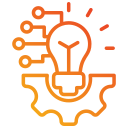This website uses cookies so that we can provide you with the best user experience possible. Cookie information is stored in your browser and performs functions such as recognising you when you return to our website and helping our team to understand which sections of the website you find most interesting and useful.
The Role of IoT in Future Smart Homes
The integration of the Internet of Things (IoT) in smart homes is poised to revolutionize the way people interact with their living spaces. Rapid advancements in sensor technology, connectivity, and data analytics are enabling homes to become more intuitive, responsive, and efficient. By embedding intelligent devices and systems throughout the household, IoT creates a network that can optimize comfort, safety, and sustainability. Future smart homes will not just offer convenience; they will anticipate and adapt to the evolving lifestyles of their inhabitants, paving the way for a seamless convergence of technology and daily living. As these innovations mature, understanding the role of IoT in shaping tomorrow’s homes is essential for homeowners, developers, and policymakers alike.

Seamless Automation and Interconnectivity

Enhanced Security and Safety
Intelligent Monitoring Systems
Advanced Threat Detection and Response
Predictive Safety Maintenance


